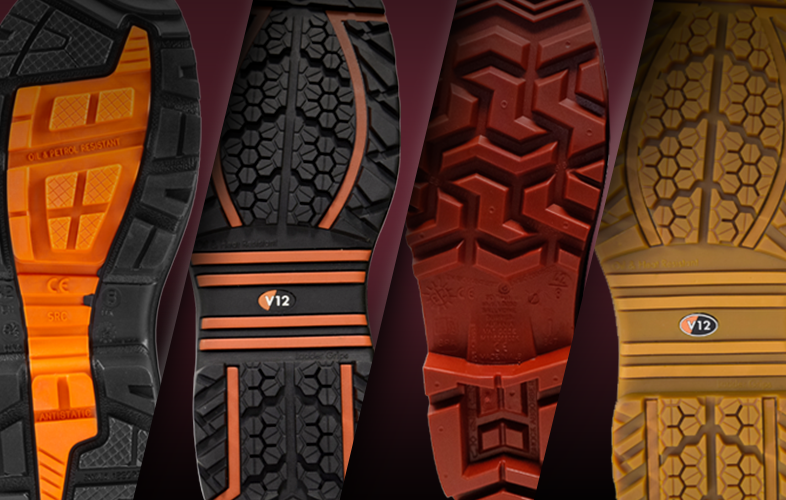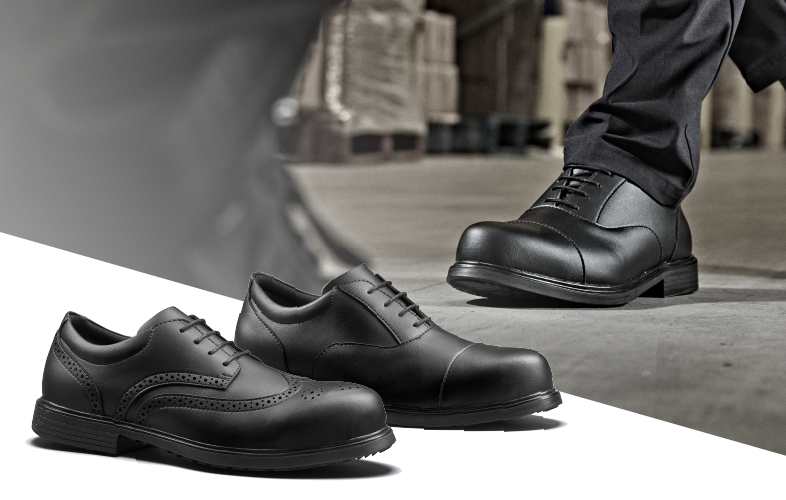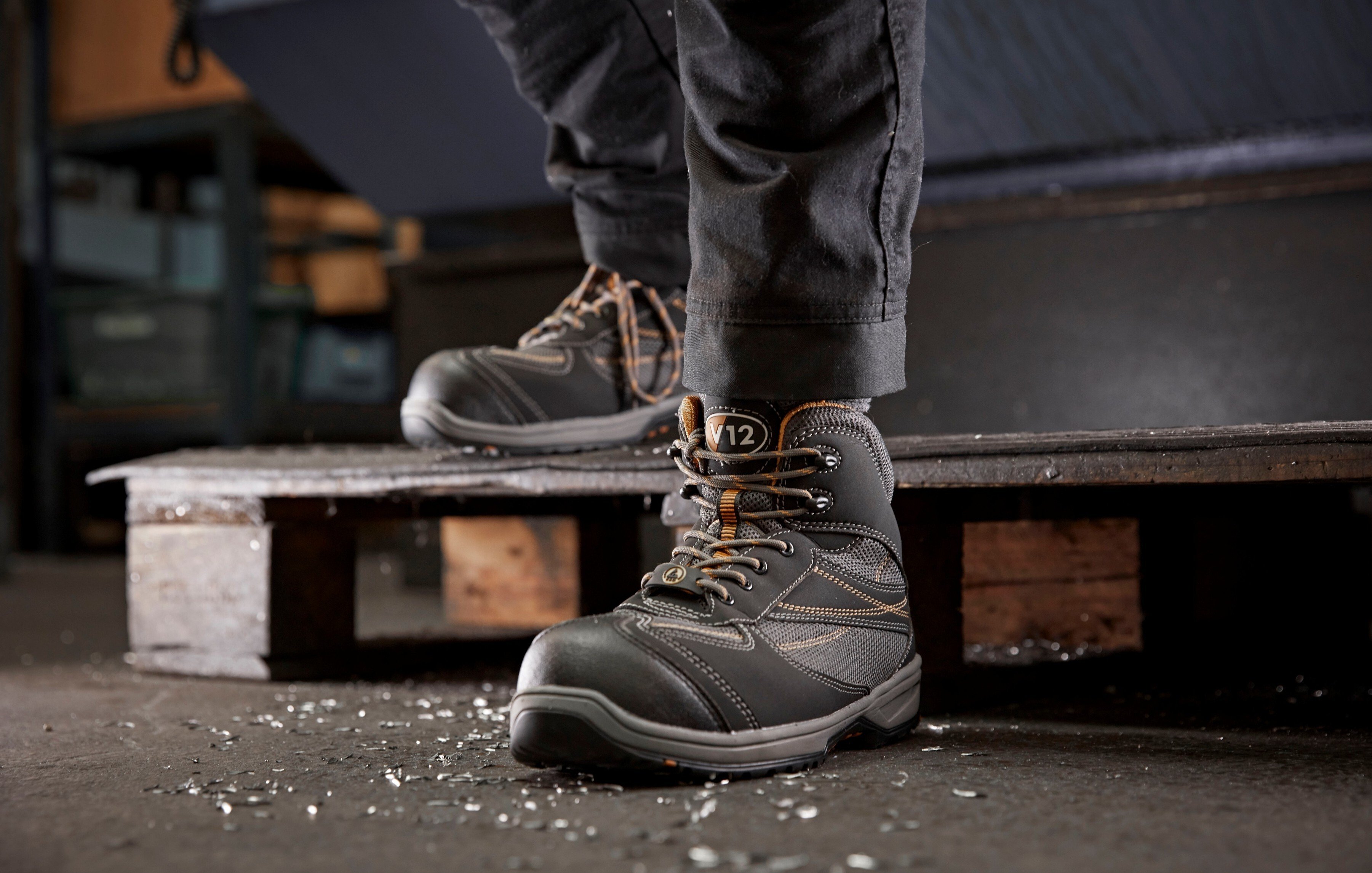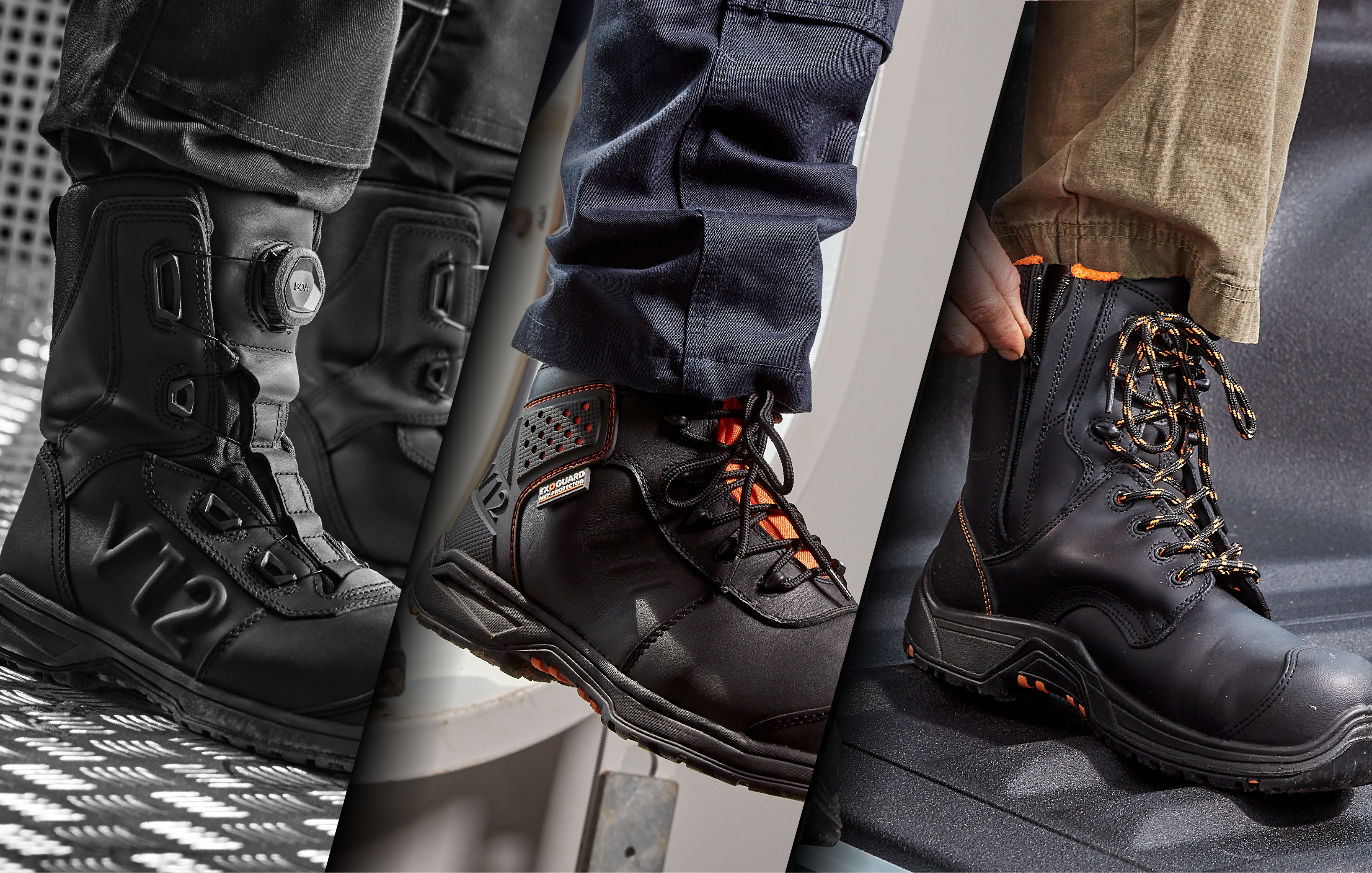The soles of boots can come in many different colours, but is this down to tastes and trends, or do the different colours indicate different levels of slip resistance?
In this blog, we’ll explore this question, as well as outline some of the other reasons why a company or wearer may choose a specific colour for the sole of their non-slip boots.
We’ll also highlight why when it comes to staying slip-free, while there can be a safety element to the colour of a sole, the really important factor is what that sole is walking on.
Visibility
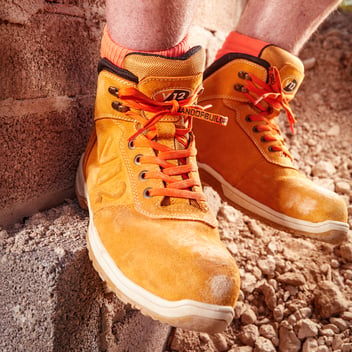 Many people ask why yellow safety boots are so common in construction. A builder wearing sand or honey coloured work boots is a sight we’re all used to, and this colour isn’t just reserved for the upper: the sole of the boot is often yellow – sometimes referred to as ‘gum.’
Many people ask why yellow safety boots are so common in construction. A builder wearing sand or honey coloured work boots is a sight we’re all used to, and this colour isn’t just reserved for the upper: the sole of the boot is often yellow – sometimes referred to as ‘gum.’
Originally, this colour was no accident; it was a safety feature, as the bright colour increased the construction workers’ visibility on site, reducing the risk of accidents and injuries.
This was particularly important in the early days of construction, where safety regulations and PPE were not as stringent as they are now.
Pictured: The V2150 BoB boot from V12 Footwear. Developed in collaboration with construction charity Band of Builders, this sand safety style is well and truly a boot built for builders.
Cleaning
Let’s look at boots used in the food industry. Often the uppers will be white, but commonly so will the soles. Not only is this so hygiene can be upheld by identifying and cleaning contamination from the boots, it also makes it easier to clean the sole, as debris clogged in white tread is more easily identified. And this would be harder to do if the tread was black.
Furthermore, given those in the food industry often work on slippery surfaces, it’s arguable that keeping the tread free of blockages does have a slip resistance benefit, because a clogged tread pattern won’t be gripping anything.
Uniform
How effectively your sole protects you from slipping is paramount, but there are scenarios where the colour will be important for a brand or service.
In industries such as the military or the Police, the colour of a work boot - including the sole - is important. To represent these types of prestigious organisations, footwear colour will be a specific requirement to tie in with long-established uniform values. This also goes for roles such as security professionals who are expected to have the right protection as well as adhering to a formal and specific dress code.
Branding
Some safety boot manufacturers make soles in a particular colour so they visually reflect or reinforce their house style or brand colours. Alternatively, the colour of the sole might be chosen to accentuate or highlight their logo or slogan embossed on the outsole or tread pattern. The key thing to remember is that these colours do not reflect any type of slip resistance classification.
FASHION TRENDS
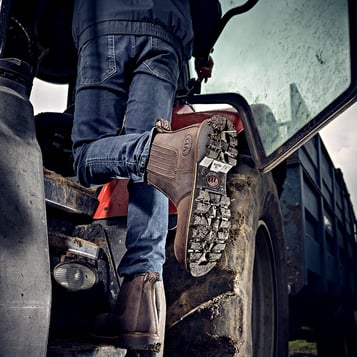 We all know that fashion changes, and while there is a predominantly protective element to safety footwear, work boot wearers also like to look current. And whether it’s an all-yellow sole, bright orange ladder grips or a highlighted tread pattern, often the colour is determined by what’s ‘in fashion’ at the time.
We all know that fashion changes, and while there is a predominantly protective element to safety footwear, work boot wearers also like to look current. And whether it’s an all-yellow sole, bright orange ladder grips or a highlighted tread pattern, often the colour is determined by what’s ‘in fashion’ at the time.
Convenience
A lot of wearers in agriculture or grounds work roles favour brown soles because mud doesn’t show up on the footwear as clearly. Brown is also common because leather is so commonly brown, and if you’re wearing a brown boot, chances are you’ll want a matching sole colour.
This is why a boot with a brown or black upper is usually attached to a similarly coloured sole unit.
Pictured: V12's dealer V1231 Rawhide: this agri favourite looks great even when dirty!
Black vs yellow rubber in slip testing
There is some slip testing evidence to show that on certain surfaces with certain contaminants, different coloured soles may perform differently.
When completing a recent Suitability Assessment with a customer, it was highlighted that a V12 sole which came in two different colours (yellow and black) but with an identical design appeared to have different strengths depending on the environment in which they were used.
To learn more, V12 took the two soles along to world-renowned 3rd-party independent testing house Satra. The two tests involved assessing the level of slip-resistance (a standard known as the ‘Friction Co-efficient') on the forepart and heel of the boots on:
- Dry chequer plate (no lubricant)
- Chequer plate with machine oil
The test results
While both soles performed well on the dry chequer plate, the yellow sole provided the highest level of grip, far exceeding the required level. In the test on the same surface with machine oil, both soles again performed well, but it was the black sole that achieved a superior level of slip resistance.
This could well be because the black sole contains ‘Carbon Black,’ a paracrystalline carbon material which is, as the name suggests, used (amongst other things) to give rubber items such as tyres their black colour.
So, there’s a good chance that the Carbon Black present in the black V12 sole may have given the boot better grip on oil, as this compound is used to improve the physical properties of rubber as well give it its black colour.
The right sole
But the difference in performance between the two soles just shows the importance of having a workplace that’s undergone a thorough health and safety assessment, where surfaces, contaminants and slip risks are fully audited and the right footwear recommendations made to optimise safety.
Afterall, the difference in the grip co-efficient achieved by the two soles based on their rubber properties highlighted to us and our customer that it’s not really about colour. The key point is that one sole for one type of team might not be suitable for another team carrying out similar activity on a different surface.
Proof that when it comes to footwear grip, one size definitely does not fit all.
Get the right grip
If you’re in charge of Health and Safety and/or PPE procurement and you need guidance on how to reduce accidents in your workplace, we can share our safety footwear expertise and passion with you.
V12 Footwear offer a three-part Footwear Suitability Assessment, which helps companies decide on the most appropriate safety footwear for employees, reducing all-too-common workplace accidents like slips, trips and falls. This no-obligation process features our:
- Industry-leading audit
- Multi-step safety footwear trial
- Safety footwear recommendation based on our 25 years of expertise and knowledge

